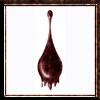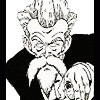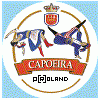tutaj jest pierwsza czesc:
http://www.forum-kul...showtopic=71795
no i znalazlem!! tylko ze po angielsku..
linka niestety nie podam bo nie mam..
probowalem cos sam tlumaczyc.. ale tutaj lepsze bylyby fotki..
pierwsza polowa artykulu jest o zaletach mieszania kulami, a druga to cwiczenia - i tu wlasnie mialem problem...
Chinese health balls turn ordinary chi kung exercises into an energizing Experience
Qigong is an ancient Oriental art form which combines spiritual concentration with breathing exercises. Tai chi qigong is a soft-style, martial art form which integrates the slow, gentle, and continuous patterned movements of tai chi along with the elements of qigong.
Characterized by slow, circular rotations incorporating concentration and breathing, tai chi qigong controls the flow of the life energy or chi, thereby uniting mind, body, and spirit. When chi flows freely throughout the body, conditions such as arthritis, backaches, headaches, abnormal blood pressure, insomnia, fatigue, and depression dissipate as the body naturally heals itself.
Tai chi qigong exercises are beneficial to the martial artist because they step up the cardiovascular system; make the body resistant to injury; improve agility and stamina; develop self-control; harmonize internal organs; tone the body with resilient muscles; improve fitness and conditioning; and begin the flow of chi.
Chinese Health Balls
Chinese health balls were used in ancient China for their meditative quality and remain helpful in achieving a physical and spiritual wholeness. They can be purchased at most health stores and come in a variety of sizes, weights, makes, and designs. Generally, the larger and heavier they are, the stronger the effect on the acupuncture and reflex points of the hands.
By rotating and maneuvering the health balls with the fingertips and in the palms of the hands, reflexology zones and meridans are stimulated. This allows chi to flow freely throughout the body. Utilizing Chinese health balls with tai chi qigong exercises enhances the flow of chi, thereby achieving benefits quicker than by singular methods.
Elements Of Form
Each breath cycle is relaxed — long, continuous, and from the diaphragm. Focus the mind on the tan tien, located two-to-three inches below the navel. Keep the spine and head in alignment. Tuck in the chin; this allows joints, bones, and muscles to align. Thrust the pelvis forward without sticking out the buttocks. Do not extend the knees over the toes. Separate the fingers slightly; open the area between the thumb and forefinger. Maintain a curvature of the limbs. In all movements, do not overreach. Movements are slow, soft, harmonious, and continuous.
The Exercises
First practice the tai chi qigong exercises. Then master the health ball techniques above a well-padded area so damage is not done to the balls if you drop them. Finally, combine the two elements for optimum results.
1. Lifting The Balls— Stand in the "starting position." Feet are parallel and a shoulder-width apart; knees are relaxed; arms are at the sides; and palms inward. Keeping the left hand at the side of the body, turn from the waist to the left and lift the right palm upward to the left side of the body above shoulder height, while transferring the weight onto the left leg.
2. The right leg stretches on its tiptoes with the heel raised. Look up to the open palm. Turn from the waist to the right while lowering the right hand to the side. Lift the left palm upward to the right side of the body above shoulder height as the weight is transferred onto the right leg.
3. The left leg stretches on its tiptoes with the heel raised. Look up to the open palm. Note: Always focus the eyes on the upward hand. Lift the ball from side to side several times, inhaling on the upward movement and exhaling on the downward movement.
Advantages: This exercise allows chi to travel through the fingers. It is beneficial for insomniacs, and balances the blood pressure.
Chinese Health Ball Technique —
1. With the hands at your sides, palms inward, grasp a Chinese health ball between the thumb and index finger of each hand. Keeping the left hand at the side of the body, lift the right palm to the left side of the body above shoulder height. Look up to the open palm. Take hold of the health ball alternately with the thumb and middle finger, the thumb and ring finger, then back again to the thumb and index finger. Lower the right hand to your side. Lift the left hand to the right side of the body above shoulder height, and repeat the fingertip movements. When the technique is mastered, combine it with the tai chi qigong exercise.
2. Rainbow Dance — Assume the starting position. Stretch the right arm out to the side horizontally, palm upward; the left arm arches in a semi-circle with the palm overhead. Transfer the weight onto the left leg, bending the left knee. The right leg straightens as the heel is raised. Look to the right. Inhale. Arch the right arm overhead, stretching the left arm horizontally. Simultaneously, transfer the weight onto the right leg, bending the right knee. The left leg straightens as the heel is raised. Look to the left. Exhale. Sway gently from side to side several times.
Advantages: Relieves gastrointestinal problems and a dreaded stomach ache. It also balances the blood pressure.
Chinese health ball technique — Grasp a health ball firmly in the fingertips of the left hand, then arch the left arm in a semicircle overhead. Be careful not to loosen the grip. The right arm extends outward to the side horizontally with a health ball placed in the palm of the hand. Roll the ball from the palm of the hand to the fingertips. Try to move it as far up the fingertips as possible without dropping it. Then grasp it firmly in the fingertips and place the right arm overhead in a semicircle as the left arm extends outward horizontally and the Chinese ball rolls back into the palm of the hand.
Repeat the balancing act from the palm to the fingertips of the left hand. When conquered, integrate the technique with the exercise "Rainbow Dance."
3. Creeping Low Like Snake — Assume the "bow step". With the feet together and parallel, place the left foot forward a few steps and bend the left knee. Now turn the right foot outward at a 45-degree angle. Extend the right arm out to the side at shoulder height; relax the wrist; and point the fingertips downward and gather them together.
Place the left arm in front at shoulder height with the palm upward. Pivot the right foot out 90 degrees on the heel, and transfer the weight onto it by straightening the left leg.
Lower the weight by bending the right knee, going down as far as possible by sliding the left foot forward and lifting the right heel as the weight is transferred onto the right toe. Upon descending, lower the arms above the knees, keeping the hands in position. Hold the position a few minutes. To rise, slide the left leg inward, bend the knee and get up slowly. Transfer the weight onto the left foot, turning the hips to the left and ascending slowly without straining the knees.
Advantages: Strengthens the ankles, knees, legs, hips, and pelvic area.
Chinese health ball technique — Two Chinese balls, preferably smaller ones, are held in the palm of the left hand. The hand should be open and relaxed. With the thumb and fingers of the left hand, rotate the health balls around each other in a counterclockwise direction. Try different rates of speed. Then add the health balls to the exercise. In the starting position two health balls are held in the palm of the left hand. While creeping low like snake, rotate the balls around each other in a counterclockwise direction.
4. Rotating Wheel In A Circle — From the starting position, bring both hands to cross in front of the tan tien. Turn from the waist to the left, keeping the arms in place. The arms separate as they move upward and around overhead, palms forward. Inhale at the same time. As the hands drop to the right side, bend forward from the waist and lower the hands toward the floor, palms downward. Repeat five times in one direction and then the other.
Advantages: Here’s an awesome stress-buster, which reduces tension and stiffness in the back and shoulders. It also regulates low blood pressure.
Chinese health ball technique — Unless skilled at this art form, please refrain from doing rotations while moving the health balls overhead: dropping a Chinese ball on the noggin is not part of the exercise.
Rotate a ball in the most comfortable direction, with the fingertips of the left hand, then with the fingertips of the right hand, and finally, with the fingertips of both hands simultaneously. When successful, grasp a ball between the fingertips of each hand and cross the hands in front of the tan tien. Twirl the health balls with the fingertips while the arms are rotating the wheel in a circle.
5. Moving Hands Like Clouds — Adopt a horse stance position. Feet are parallel and a shoulder-width apart; arms are at the sides, palms inward. Bend the knees to sit deeper. Extend both arms to the right at shoulder height with the palms facing outward and to the right. The left palm is positioned near the right elbow. Look to the right. While moving a half-step to the left with the left foot, the right hand sweeps downward and to the left with the palm facing outward. The left hand moves up vertically to face level, then sweeps, palm outward, to the left. Both arms are now moving from right to left as the hips and shoulders turn 45 degrees to the left.
The right foot steps in a half-step to the left. At the edge of the movement, the right hand moves up vertically past the left elbow (a mirror image of the starting position), then moves in front of the face and sweeps palm outward to the right while the left hand sweeps down and across to the right, palm outward, as the hips and shoulders turn 45 degrees to the right. The arms are now moving from left to right as the left foot takes a half-step to the left. The sequence is repeated at the right edge of the movement. Note: The eyes always follow the upward hand. Repeat three-to-five times while always stepping to the left.
Advantages: Helps prevent arthritis, tendonitis, and aids digestive system.
Chinese health ball technique — Twirl or rotate the health balls on the fingertips of both hands while moving hands like clouds. Then add the footwork explained in the exercise.
6. Shau Gong (Balancing Chi) — Feet are parallel and a shoulder-width apart; knees are relaxed. Place palms inward in front of the tan tien with the fingertips a few inches apart. Inhale and lift both hands (fingertips locked in position) to the chest while raising the heels. When the hands reach chest height, turn the palms downward. Exhale and lower the hands to the tan tien while lowering the heels. Turn palms inward and repeat several times.
Advantages: Shau gong acts upon the elimination organs such as the colon and kidneys. It balances the yin/yang energy of the body and, therefore, should be practiced at the end of the session to balance and calm the chi generated.
Conclusion
Seemingly subtle in its application, tai chi qigong exercises, when combined with Chinese health balls, are not for the faint at heart. There are potent, internal forces at work when one masters the two elements. Once chi is stimulated and developed to its higher levels, the mind, body, and spirit become one powerful unit.

chińskie kule - cz. 2 (zna ktos angielski?)
Rozpoczęty przez , Ponad rok temu
1 odpowiedź w tym temacie
Użytkownicy przeglądający ten temat: 0
0 użytkowników, 0 gości, 0 anonimowych
 FaceBook
FaceBook
10 następnych tematów
-
 Senność
Senność- Ponad rok temu
-
 Zapal sobie
Zapal sobie- Ponad rok temu
-
 uzupelnianie tluszczow w diecie
uzupelnianie tluszczow w diecie- Ponad rok temu
-
 Expander (odżywka)
Expander (odżywka)- Ponad rok temu
-
 Skakanka
Skakanka- Ponad rok temu
-
 Nasiona Guarany
Nasiona Guarany- Ponad rok temu
-
 Nadpobudliwość Serca
Nadpobudliwość Serca- Ponad rok temu
-
 Wyniki badania krwi
Wyniki badania krwi- Ponad rok temu
-
 Le Parkour... :)
Le Parkour... :)- Ponad rok temu
-
 maść
maść- Ponad rok temu





